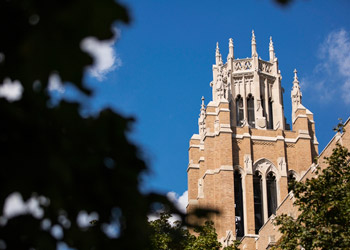- What should I do if I am sexually assaulted?
- What should I do if I am sexually harassed, abused or stalked?
- Faculty and Staff:
What should I do if someone tells me they have been sexually assaulted, harassed, abused or stalked? - Students and Non-Marquette Employees:
What should I do if someone tells me they have been sexually assaulted, harassed, abused or stalked?
Education
What is sexual assault?
Sexual assault is any sexual contact without consent. Sexual assault often occurs through the use or threat of force or through intentionally taking advantage of a person who is incapable of consent due to the use of alcohol or drugs.
Sexual assault can be perpetrated by a stranger, but it is more commonly committed by someone the victim knows, such as a friend, boyfriend/girlfriend/partner or acquaintance. Most often, assault occurs with someone the victim knows and while one or both parties are under the influence of alcohol, victims often blame themselves and do not initially identify it as sexual assault. Often the victim will not tell anyone about it. If they do tell someone, 80 percent of the time they will seek support from a peer before they will seek help from a professional.
Statistics on College Campuses
It is estimated that nearly 25 percent of college women have been victims of rape or attempted rape since the age of 14.
- Fisher, B., F. Cullen and M. Turner (2000). The Sexual Victimization of College Women. Washington, D.C.: U.S. Department of Justice, National Institute of Justice and Bureau of Justice Statistics.
90 percent of sexual assaults are committed by someone the survivor knows.
- Fisher, B., F. Cullen and M. Turner (2000). The Sexual Victimization of College Women. Washington, D.C.: U.S. Department of Justice, National Institute of Justice and Bureau of Justice Statistics.
Fewer than 3 percent of all college women become victims of rape (either completed or attempted) in a given nine-month academic year. While the risk seems low, the percentage translates into 35 such crimes for every 1,000 female students. On a campus with 10,000 female students, the number could reach 350.
- Fisher, B., F. Cullen and M. Turner (2000). The Sexual Victimization of College Women. Washington, D.C.: U.S. Department of Justice, National Institute of Justice and Bureau of Justice Statistics.
In more than three-quarters of college rapes, the offender, the survivor or both had been drinking.
- Abbey, A. (1991). “Acquaintance Rape and Alcohol Consumption on College Campuses: How Are They Linked?” College Health 39:165–169.
Although men are sexually assaulted far less often than women, analysis of the National Crime Victimization Survey data revealed that 1.4 per 1,000 college men report rape or sexual assault victimization each year.
- Abbey, A. (2002). "Alcohol-Related Sexual Assault: A Common Problem Among College Students." Journal of Studies on Alcohol, Supplement No. 14: 118-128.


